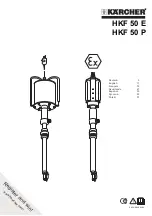
Spatial FOG Reference Manual
Page 44 of 144
Version 2.3
03/05/2018
Applications where north seeking should not be used as the sole heading source
include
•
Environments with high vibration.
•
Environments with rapid temperature fuctuations.
•
Environments with strong changing magnetic fields close to the FOG unit (the
fibre optic gyroscopes bias is afected by strong magnetic fields).
•
Applications where it is impractical to perform the initialisation procedure.
•
Applications where the system is moving at speeds of over 1 metre/second and
no velocity aiding information is available.
In these scenarios an alternative heading source should be considered. Please see the
alternative options of Velocity Heading and Dual Antenna Heading below. If in doubt,
please contact Advanced Navigation support for assistance in selecting the correct
heading source for your application.
10.4.2
Velocity Heading
Velocity heading works by deriving heading from the direction of velocity and
acceleration. Velocity heading works well with cars, boats, fixed wing aircraft and other
vehicles that don't move sideways. Velocity heading does not work with helicopters
and other 3D vehicles. The downside of velocity heading is that heading can not be
measured until the vehicle moves at a horizontal speed of over 1.15 metres/second
with a GNSS fix. Velocity heading is very useful for getting accurate heading quickly on
moving vehicles without requiring any specific initialisation procedure. It is also able to
initialise the north seeking gyrocompass heading without requiring the initialisation
procedure described in section 10.4.1.
10.4.3
Dual Antenna Heading
Spatial FOG's internal GNSS receiver supports moving baseline RTK heading when
paired with the optional Spatial FOG dual antenna upgrade kit. This heading source is
very useful for applications where the north seeking gyrocompass heading cannot be
used or is not convenient such as applications where it is impractical to perform the
north seeking initialisation procedure. The dual antenna heading does not require any
initialisation and is very accurate in both stationary and moving environments.
The dual antenna upgrade kit consists of the dual antenna upgrade unit, see
Illustration 23, the dual antenna upgrade cable, see Illustration 24, an Antcom G5Ant-
53A4T1 GNSS antenna and a 4 metre antenna cable. To install the upgrade kit, the
unit should be powered with 9-36 V DC and the D-dub 9 connector plugged into the
GNSS connector on the Spatial FOG cable harness. The antenna connected to the
Spatial FOG unit is known as the primary antenna and the antenna connected to the
upgrade unit is known as the secondary antenna. When installed on the vehicle, the
primary antenna should be mounted directly forwards of the secondary antenna with a
separation of 1 metre or more.
Please contact Advanced Navigation sales for pricing.
















































